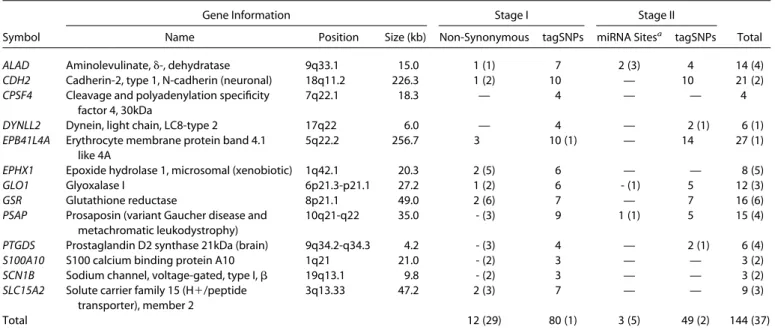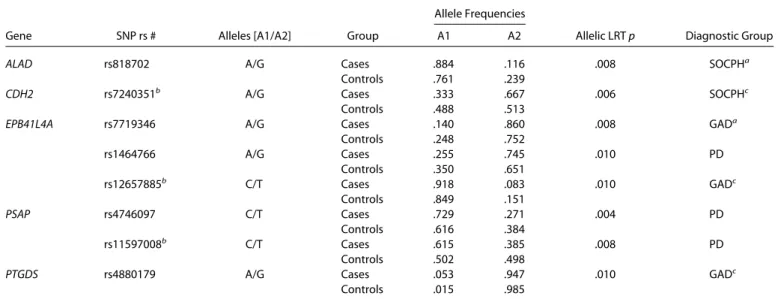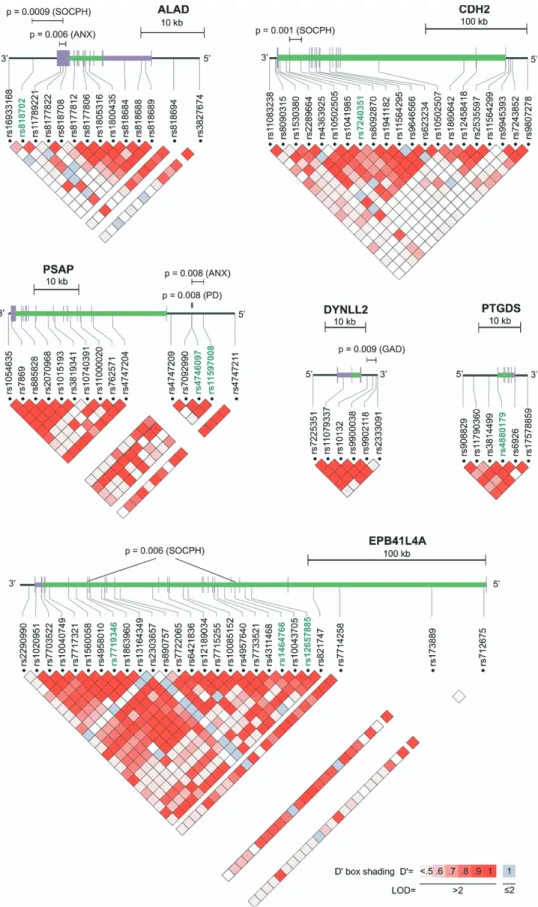An Association Analysis of Murine Anxiety Genes in Humans Implicates Novel Candidate Genes for Anxiety Disorders
Texte intégral
Figure




Documents relatifs
To link ATRA in vitro cell treatment to craniofacial cartilage defects observed in our in vivo experiments, we performed ATDC5 differentiation into the chondrocyte lineage,
To identify SNPs and candidate genes associated with natural variation in lipid and diterpene contents in Arabica beans, we performed GWAS using four methods:
Despite the genetic distances between Moko lineages and their proximity to the brown rot and NPB ecotypes, a high number of genes contained sites that were coincidentally fixed in
SSCP primers designed to investigate the allelic diversity of 2 different candidate genes for tolerance to iron chlorosis were successfully amplified in the 25 citrus
canephora conilon susceptible (clone 22) or tolerant (clones 14, 73 and 120) to drought grown under greenhouse conditions with (I) or without (NI) irrigation and (2)
Functional Variability Of Candidate Genes Involved In The Lignification Process In Eucalyptus.. Eric Mandrou 1, 2, 3 , Genséric Beydon 2, 3 , Gilles Chaix 2 , Philippe Vigneron 2
8 genes known to contribute to root development in rice and Arabidopsis or co-segregating with meta-QTLs for root development in rice (Courtois et al, 2009): CRL1/ARL1, 4
Since 1996 when the estrogen receptor gene has been investigated with regard to influence litter size, several candidate gene and QTL analyses have been performed in order to find